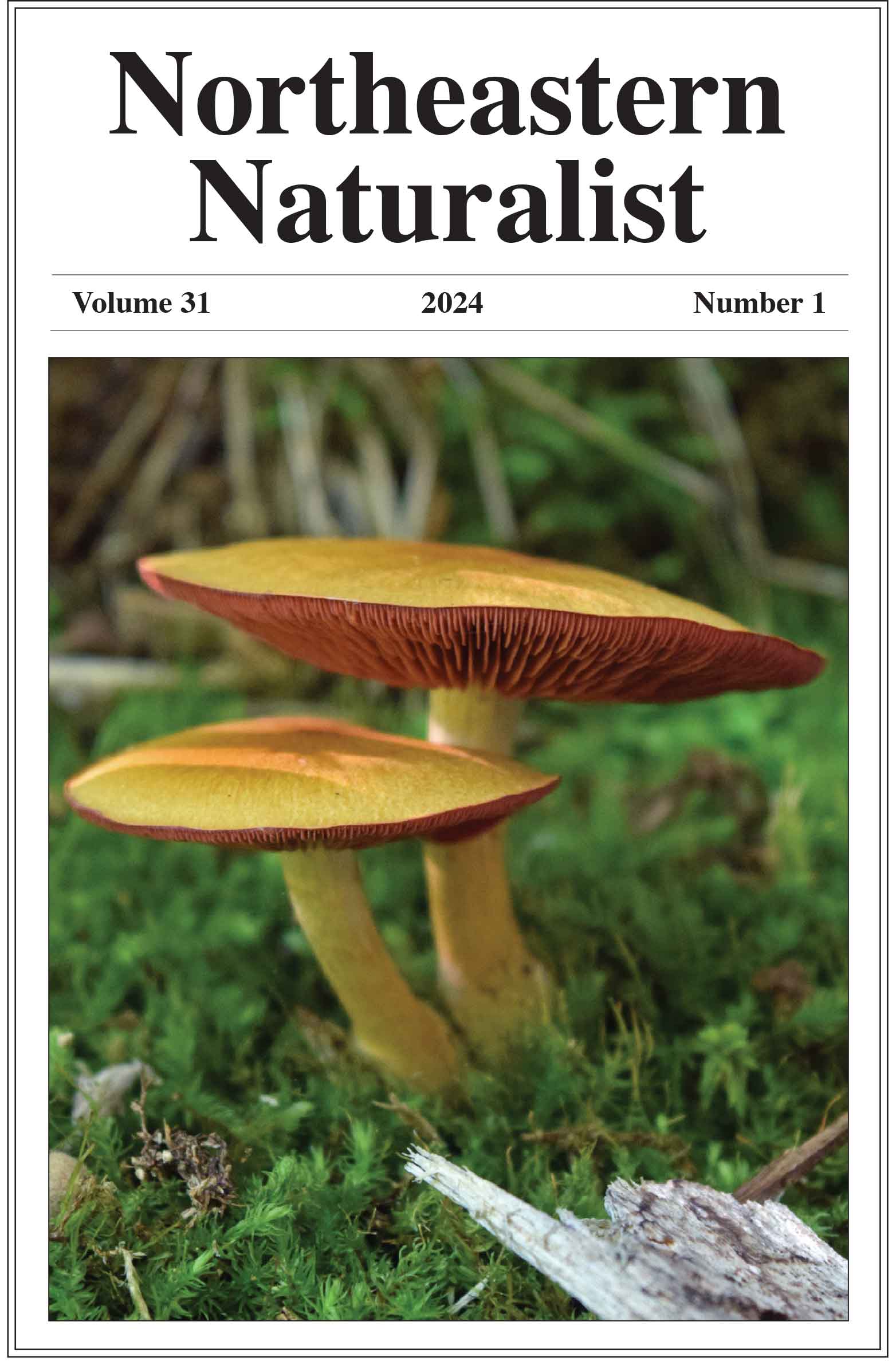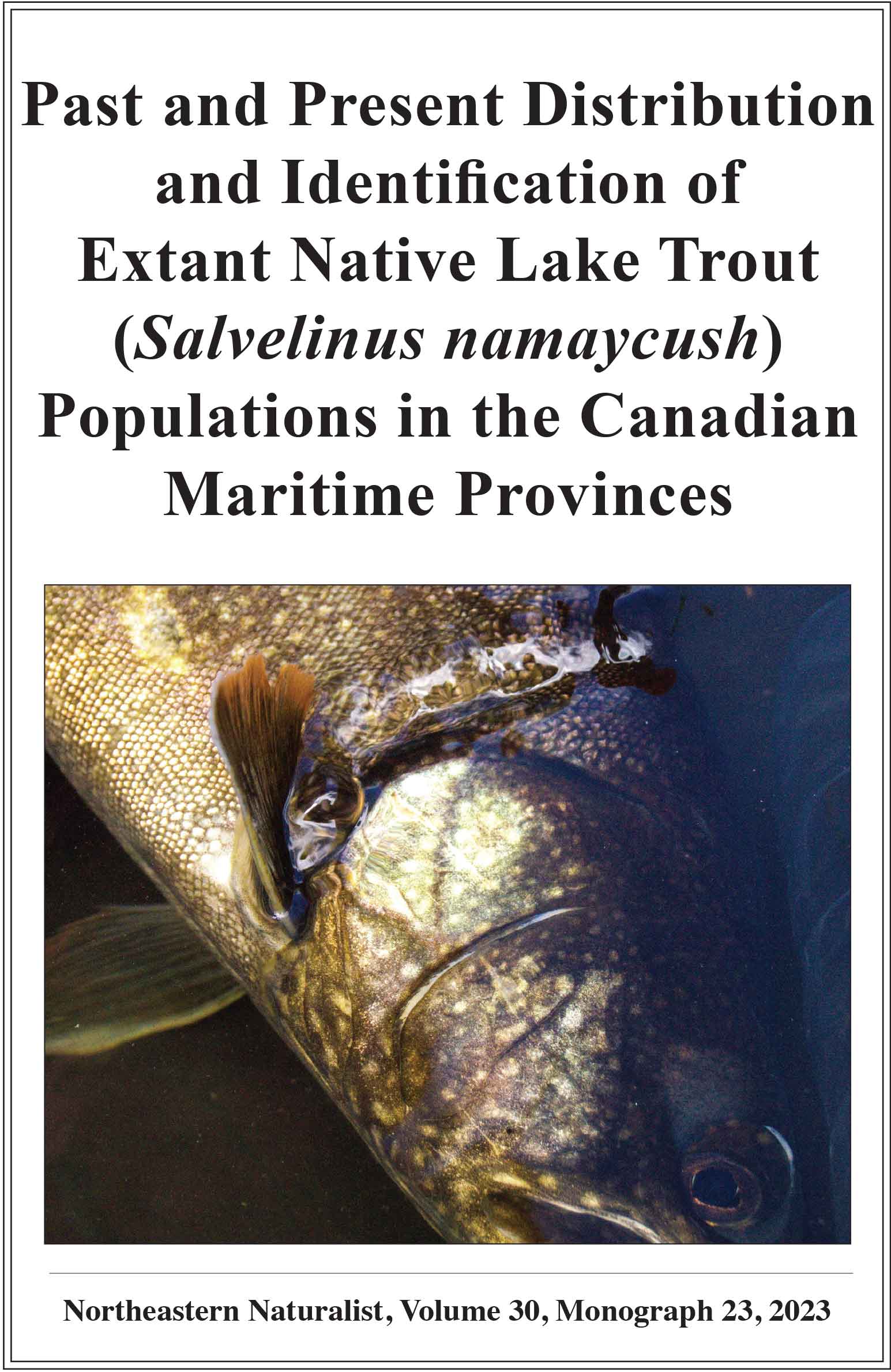Daytime Surface Sightings and the Distribution of Finback (Balaenoptera physalus), Minke (Balaenoptera acutorostrata), and Humpback (Megaptera novaeangliae) Whales in the Quoddy Region of the Bay of Fundy, Canada
Tessa Lachance1, Jane Campbell1, and Stephen Turnbull1,*
1University of New Brunswick, Department of Biological Sciences, Saint John, NB E2L 4L5, Canada. *Corresponding author.
Northeastern Naturalist, Volume 30, Issue 2 (2023): 135–150
Abstract
We collected data on the distribution of Balaenoptera physalus (Finback Whale), Balaenoptera acutorostrata (Minke Whale), and Megaptera novaeangliae (Humpback Whale), in the Quoddy region of the Bay of Fundy, Canada, from a whale-watching vessel during commercial tours from 2006 to 2012. Sightings were non-random between species and showed clumped distributions over the study area: Finback Whales (χ2 = 2454.03, df = 7, P < 0.005), Minke Whales (χ2 = 3488.24, df = 7, P < 0.005), and Humpback Whales (χ2 = 301.784, df = 7, P < 0.005). Minke Whales were most frequently sighted in Head Harbour Passage, high concentrations of Finback Whales were most frequently sighted off Blacks Harbour, and Humpback Whale sightings were highest around The Wolves. It appears that the whales aggregate in response to physical and biological features of the environment, such as depth, bottom topography, and fine-scale oceanographic features that enable foraging. Oceanographic features such as tidal state and temperature also influence the distribution of whales by aggregating their common prey species in high concentrations.
![]() Download Full-text pdf (Accessible only to subscribers. To subscribe click here.)
Download Full-text pdf (Accessible only to subscribers. To subscribe click here.)
Access Journal Content
Open access browsing of table of contents and abstract pages. Full text pdfs available for download for subscribers.
Issue-in-Progress: Vol. 31 (2) ... early view
Check out NENA's latest Monograph:












 The Northeastern Naturalist is a peer-reviewed journal that covers all aspects of natural history within northeastern North America. We welcome research articles, summary review papers, and observational notes.
The Northeastern Naturalist is a peer-reviewed journal that covers all aspects of natural history within northeastern North America. We welcome research articles, summary review papers, and observational notes.